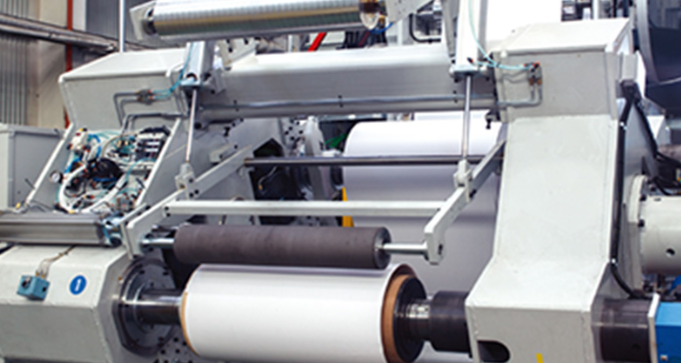Sep. 08, 2023
Machinery
Understanding gravure printing
Gravure printing is a widely used finishing method, often used to print a large number of magazines and catalogs. In contrast to flexography, in gravure printing the ink is transferred from the engraved microcavities rather than the relief. These cavities embedded in the printing cylinder form the printing pattern. A second, softer impression cylinder pushes the web against the main printing cylinder and transfers the ink from the cavity to the web by matching the surface energy of the ink and substrate. The printing cylinder is partially immersed in an ink bath, similar to an anilox roller in flexo printing, and any excess ink is removed from the printing cylinder using a doctor blade, leaving ink only in the cavity. As for flexographic printing, chambered doctor blades can also be used. Gravure printing is highly dependent on ink viscosity, substrate speed, and pressure applied by the impression roller, so great care needs to be taken when selecting processing conditions and ink formulations. However, the process is suitable for low-viscosity inks and can achieve high printing speeds of up to 15 m/s.

Analysis of gravure printing machine
A gravure printing press is a complex piece of equipment designed to perform the gravure printing process. Here is a breakdown of its basic components and their functions:
1. Cylinder: The heart of the gravure printing machine is the printing cylinder. The cylinder is usually made of copper-plated steel and is carved with tiny cells, or cups, that hold the ink. The depth, size, and arrangement of these cells determine image quality.
2. Ink supply system: The gravure printing machine is equipped with an ink supply system, which can accurately measure ink to ensure consistency. Ink is supplied to a scraper blade which scrapes excess ink off the surface of the cylinder, leaving only the ink in the cells.
3. Impression Roller: This roller applies pressure to the paper or substrate as it passes through the machine, transferring ink from the engraving cylinder to the material.
4. Drying system: After the ink is transferred to the substrate, it needs to be dried quickly to prevent staining. Gravure printing presses are often equipped with drying devices, such as hot air or UV lamps, to speed up the process.
5. Control system: The gravure printing machine is equipped with a sophisticated control system that can adjust various parameters such as ink flow, speed and pressure to maintain consistent printing quality.
Gravure printing process
The gravure printing process proves precision and consistency:
Related links:Engraving: First, the image to be printed is engraved onto the printing cylinder using a special machine. This sculpting process creates tiny cells, or cups, on the surface of the cylinder.
Ink Application: Ink is applied to the surface of the cylinder, covering the cells and non-image areas.
Squeegee: The scraper scrapes excess ink off the cylinder, leaving ink only in the engraving cells.
Impression: The substrate (paper, plastic or other material) is pressed against an inking cylinder by an impression roller, which transfers the ink to the material.
Drying: The print goes through a drying system that fixes the ink on the substrate.
Finished Product: Printed material has excellent clarity, detail, and color saturation.
Application and advantages of gravure printing machine
Gravure printing machines are widely used in various industries such as packaging, decorative printing, publishing, security printing, etc.
Gravure printing offers several advantages: high image quality, consistency, durability, and versatility.
In conclusion, gravure presses are the power behind the printing process, renowned for their precision, detail and versatility. Gravure printing continues to advance with technology.
Previous: Exploring the Four Types of Electrical Actuators
Next: Unveiling the Fuel Efficiency of Diesel Fuel Dump Trucks
Related Articles
If you are interested in sending in a Guest Blogger Submission,welcome to write for us!
All Comments ( 0 )